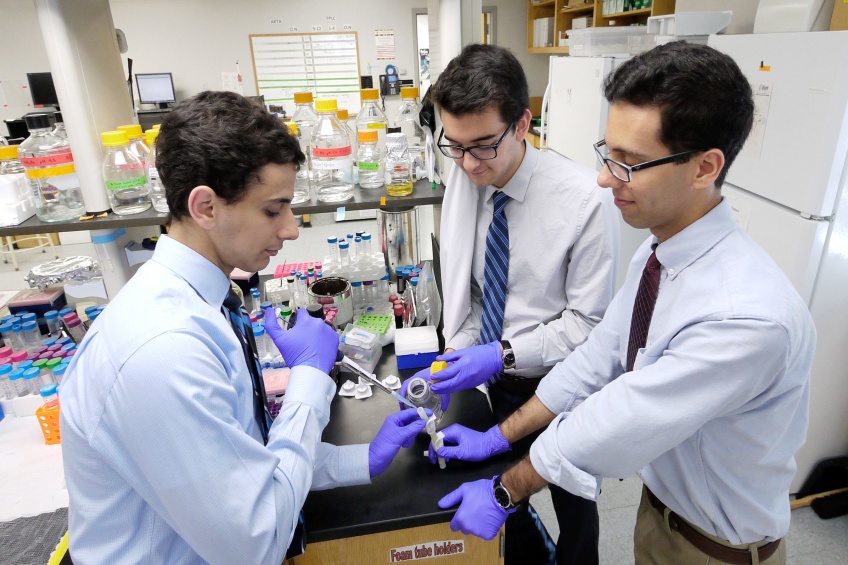“Terps in Space” is the fundraising title for the project Microbial Pathogenicity in Microgravity for which three University of Maryland seniors will send a Fluid Mixing Enclosure (FME) up to the International Space Station where astronauts will conduct an experiment involving bacteria and then return the tube to Earth. “The goal is to discover how these bacteria become more pathogenic and cause more disease in astronauts,” said Aaron Solomon, one of the team members and a Greenbelter.
The team started writing their grant in February to the Student Spaceflight Experiments Program competition, a program that is designed to inspire and engage students grades 5 to 16 in math, science, engineering and technology by offering an opportunity for them to propose and design an experiment for a mini-lab in space. Solomon, Yaniv Kazansky and Gary Soroosh heard in May that they were selected to have their experiment on a SpaceX rocket scheduled for launch in March 2017. Soroosh, a neuro-biology and physiology major, said “It’s a surreal feeling. It hasn’t truly set in that we are doing a project like this. We have had amazing support – the financing, the logistics, filing the paperwork with NASA.”
The three students set up a crowdfunding campaign to pay for the post flight testing on the tube including sequencing the bacteria’s RNA. When deciding what experiment they wanted to run, Soroosh said they asked themselves “How can we do something that gives us some new knowledge that can make a meaningful difference in the lives of someone else.” Soroosh, who is planning to go to medical school next fall, said, “Nobody knows how bacteria act in space and that intrigues me.” Kazansky, who is studying bio-chemistry, explained “People have actually found that in space microbes tend to be more virulent or dangerous and they grow more thickly on surfaces in the space station.”
Though this experiment was not their first idea, it is an area of study that all three are passionate about. Kazansky continues, “So we are investigating something called gene expression, which is the language of how DNA tells your cells what to do. If DNA is the blueprint for what your cell does, RNA is how it communicates what part of the DNA it wants to turn on.” RNA is what they will be extracting from the bacteria at the completion of the experiment and sequencing to determine any alterations from the bacteria in space and an identical control tube on Earth. The RNA should tell them what genes are being turned on or off by the microgravity of space. “Our goal is to see if the RNA expression is any different in space, especially in motility,” said Kazansky More on this story in the paper – click HERE

